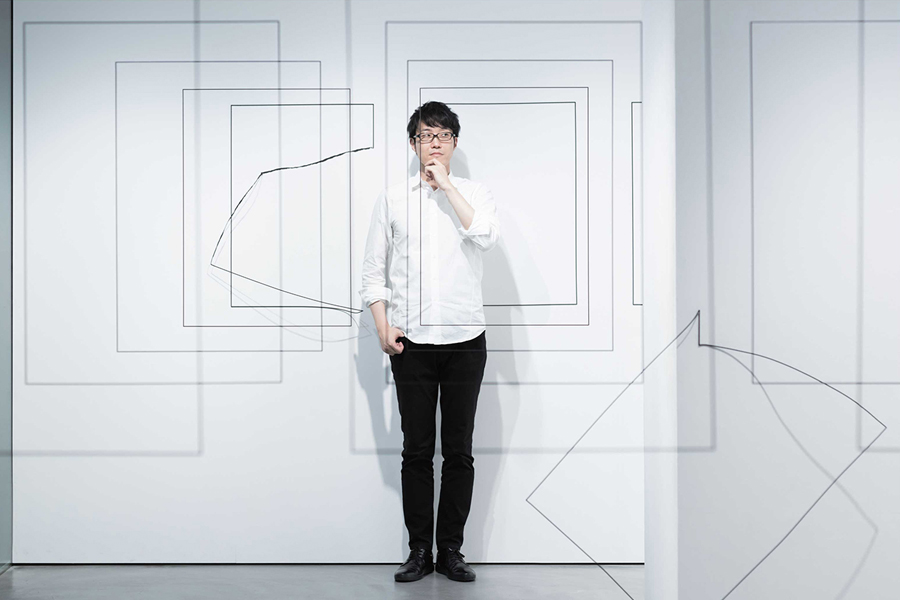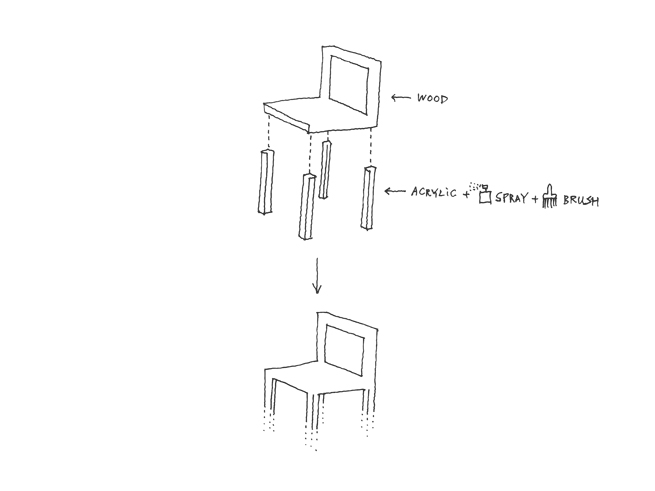What’s the origin of Nendo term? What’s your studio philosophy?
Nendo means Play-Doh. It’s about freedom, like small kids would play with Play-Doh or clay, changing shapes and sizes and mixing colours – and that’s exactly the way I want to design things; in a very free and flexible way. I named my studio Nendo when I came to Milan for the first time in 2002. Until then I was studying architecture and it was very strict.
When I came to Milan everyone was designing things so freely and everyone seemed so happy. It was exactly the way I wanted to design things.
I guess the place I was born and grew up until 11was influenced me. I was born in Canada and came back to Japan when I was 11 years old. The place I grew up in Canada was very rural. That’s why I got a cultural shock when I moved to central Tokyo. Everything looked fresh and interesting to me. Because of this experience, I can easily find extraordinary or fun things in everyday life.
You usually link a little drawn concept to your works. How important is the sketch for the creation of an idea?What’s the difference between using a 3d printer and drawing during the creative phase?
What is important for me is not about sketching and making renderings, it’s more about observing and looking at things.
I’m inspired by everything. There’s so much information. The most important stories for me though come from everyday life. It’s about respecting everyday life, boring life. There’s something interesting in the routine. Then there are small moments that make life interesting. We know that every artist, creator, designer has a favourite artwork, a favorite “son”. What is/are your favorite one/s?
Actually, I really do not have the one. I’m always focusing on what I’m doing and the projects in front of me is the best one at the moment. Your plans are moving into architecture. What are your next projects in this field?
The projects of the station near Kyoto will launch this April. The plan for the 6000 m2 area includes a cafe and other commercial spaces, an information kiosk, a play area, children’s cycling area, fountain and outdoor stage. We are working on private houses as well.
We try not to make objects for objects —Nendo designs have to expand into future projects and ideas. We’re always concerned about how to link the object within space, within an interior. In architecture and in design the emptiness is as important as the fullness. In your works this complementarity is very significant. Could you explain this difference and how do you conceive space especially for exhibitions like Un-printed material?
I’m trying to think about things that are in between things. It’s like when you’re looking the stars, everybody is looking at the stars and they think: “That’s so beautiful.” But what I’m trying to see is the darkness, the sky that is making the stars look nice, so I’m trying to design the sky itself, the darkness. And then by looking into what’s in between, I’m able to find something that is slightly different; new ideas; very small ideas, but something very interesting. Mallarmé conceived poems with absences as well as words.The Japanese have a word (ma) for this interval which gives shape to the whole. Among English loanwords of Japanese origin, both Ma (negative space) and Ken (architecture) are written with the same character 間. Could you draw a little sketch about this concept? What’ s 間 for you?
I think of it more as conceptual space rather than physical space. We each have these preconceived notions in our minds and as we trace the outlines of these things we notice that a fuzzy, ambiguous space exists between them. Preconceived notions are a fixed way of thinking, but the thought that exists in these spaces is infinitely flexible and fluid. I approach these areas with a playful intent, as if I were kneading and working clay.
This is the sketch of the exhibition that we held at the Design Museum Holon titled “Nendo: the space in between.” Hope this sketch works for you.






















